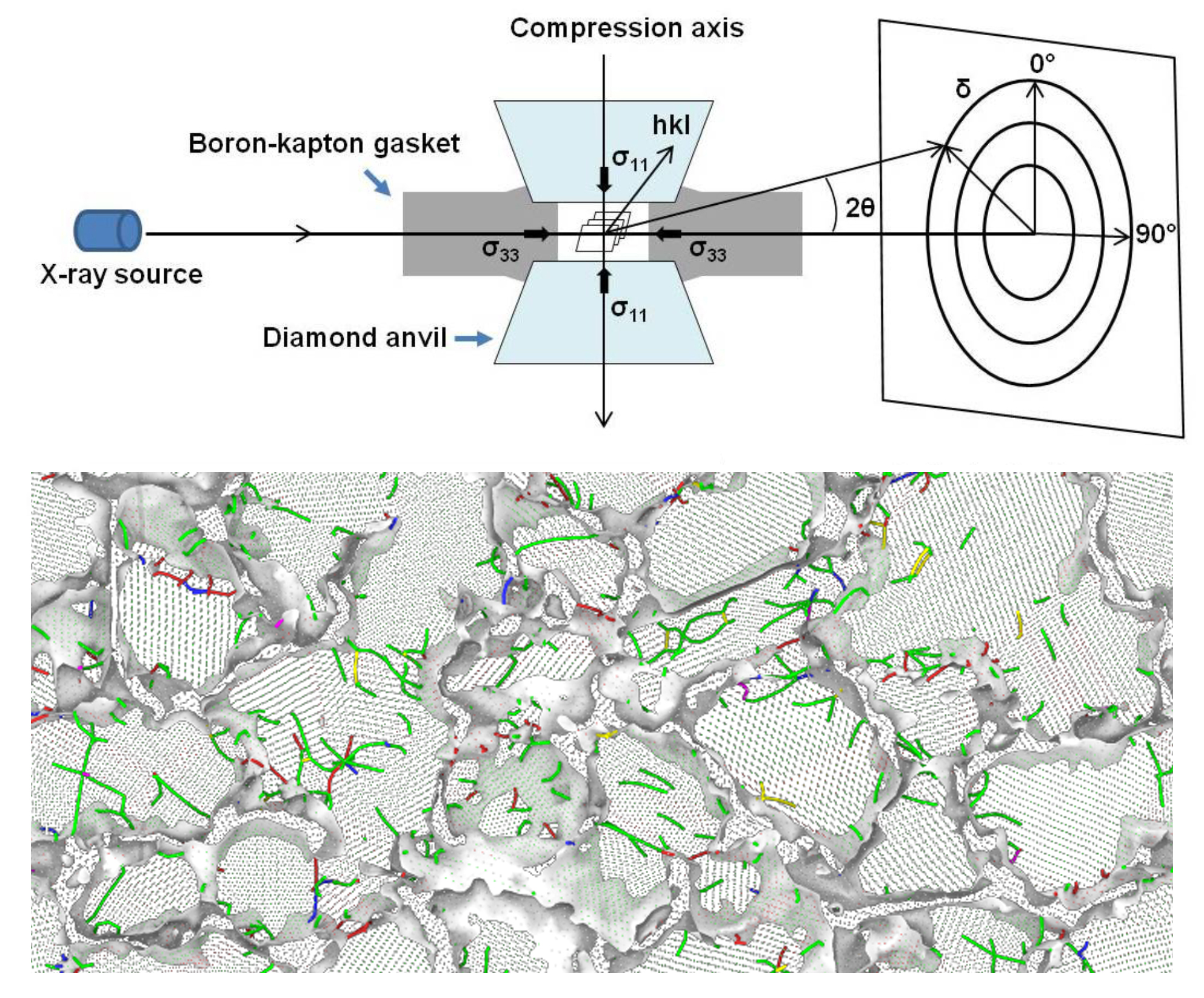From autos and aircraft to cutting tools, high-strength metals are in great demand in modern industry as well as in daily life. Metals are polycrystalline materials, made up of tiny crystal grains that form as molten metal cools. Smaller grain sizes generally result in stronger metals, but previous studies have suggested that this correlation breaks down below a critical grain size of about 10 to 15 nm. At that size, it was suggested that the dominant mechanism of deformation will shift from atomic-lattice dislocation to grain-boundary sliding, leading to a softening of the material. Due to technical limitations, however, it’s difficult to produce metals with grain sizes below 10 nm and then measure their strength via traditional tension/hardness measurements. Thus, experimental tests have up until now proven inconclusive.
In this work, researchers subjected powder samples of pure nickel (grain sizes from 3 to 200 nm) to high pressures (up to 39 GPa) in a diamond-anvil cell at ALS Beamline 12.2.2. They simultaneously used x-ray diffraction to obtain structural data about the nickel, enabling them to track how the nickel’s yield point (where plastic deformation begins) is affected by grain size. Surprisingly, the results showed that the material actually got stronger as the grain size decreased below 20 nm. Nickel samples with ultrafine grains about 3 nm in size were about four times as strong as samples with coarser grains. The results indicate that grain-size refinement and suppression of grain-boundary plasticity are viable strategies for designing ultrastrong, ultrahard metals for future applications.

X. Zhou, Z. Feng, L. Zhu, J. Xu, L. Miyagi, H. Dong, H. Sheng, Y. Wang, Q. Li, Y. Ma, H. Zhang, J. Yan, N. Tamura, M. Kunz, K. Lutker, T. Huang, D.A. Hughes, X. Huang, and B. Chen, “High-pressure strengthening in ultrafine-grained metals,” Nature 579, 67 (2020), doi: 10.1038/s41586-020-2036-z.